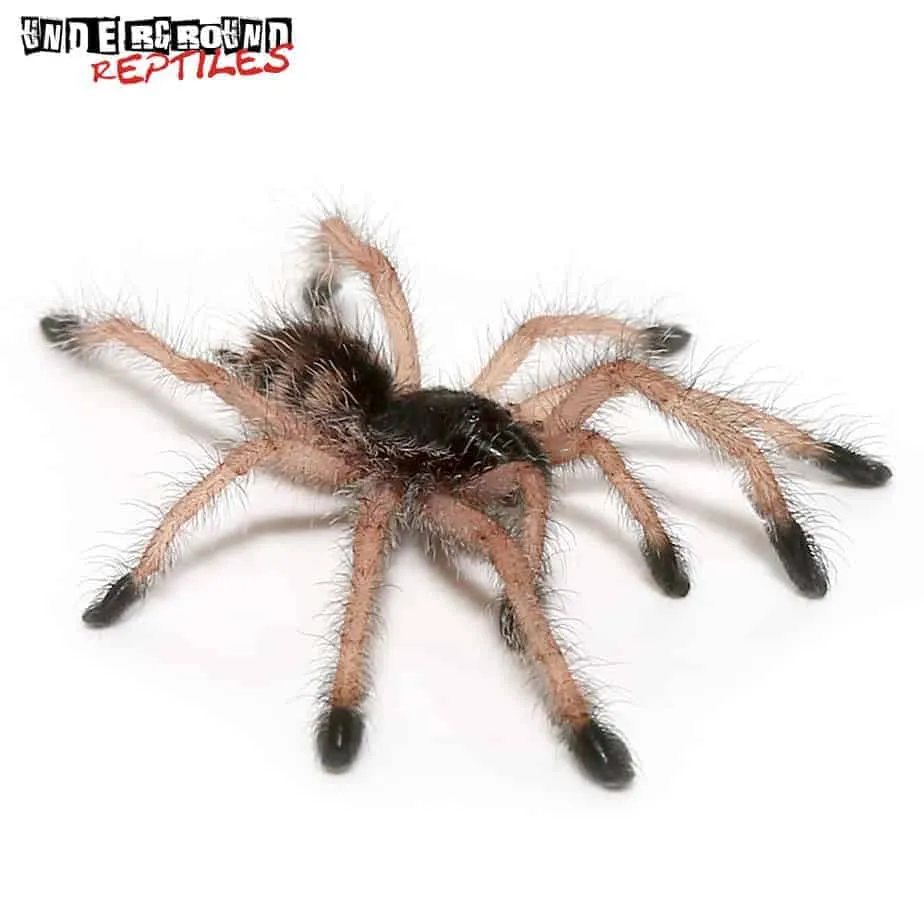The Purple Pink Toe Tarantula (Avicularia avicularia) is a captivating creature, known for its striking coloration and arboreal lifestyle. However, beneath its beautiful exterior lies a complex temperament that every potential owner should understand. Knowing the secrets of the Purple Pink Toe Tarantula’s temperament is crucial for responsible pet ownership, ensuring the well-being of both the spider and its keeper. This guide delves into the intricacies of their behavior, providing insights into how to create a harmonious relationship with these fascinating arachnids. From understanding what influences their moods to learning safe handling techniques, this article is your key to unlocking the secrets of Purple Pink Toe Tarantula temperament.
Understanding Purple Pink Toe Tarantula Temperament
Temperament in Purple Pink Toe Tarantulas is not a fixed trait; it’s a dynamic aspect influenced by several factors. These spiders are generally considered to be docile compared to many other tarantula species, but individual personalities vary. Some are more skittish, others are bolder, and some may display defensive behaviors more readily. Understanding the factors that shape their behavior is key to predicting how a specific tarantula might react in different situations, allowing for a more informed and considerate approach to their care and interaction.
What Influences Temperament?
Age and Maturity
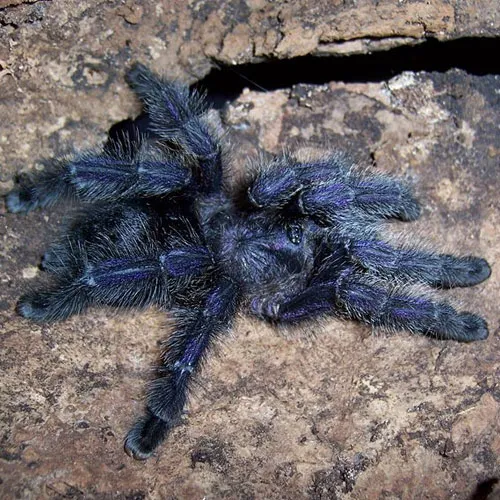
Age plays a significant role in a Purple Pink Toe Tarantula’s temperament. Spiderlings are often more nervous and prone to bolting or displaying defensive behaviors. As they mature, they typically become calmer and more predictable. Adult tarantulas, especially those that have been kept in stable environments with consistent care, tend to exhibit more relaxed behavior. However, it is important to note that even mature tarantulas can react unpredictably to sudden changes in their environment or perceived threats.
Gender Differences
While gender doesn’t drastically alter temperament, there might be subtle differences. Females tend to be more laid-back, living longer and often becoming more accustomed to their environment over time. Males, on the other hand, have a shorter lifespan, particularly after reaching maturity and may exhibit more erratic behavior during their search for a mate. It’s important to observe individual spiders to understand their unique personalities, as these are general tendencies rather than absolute rules. For instance, the image of a male versus female Purple Pink Toe Tarantula shows differences in their physical characteristics, but also subtle differences in their overall disposition. The males tends to be more active than females.
Environmental Factors
The environment profoundly influences a Purple Pink Toe Tarantula’s temperament. A well-maintained habitat with appropriate humidity, temperature, and hiding places will reduce stress and promote a calmer disposition. Sudden changes in the environment, such as loud noises, vibrations, or drastic temperature fluctuations, can trigger defensive behaviors. A tarantula kept in an unsuitable environment may become stressed, leading to increased irritability and a higher likelihood of defensive actions. Therefore, providing a stable and comfortable habitat is fundamental to fostering a well-adjusted and approachable pet.
Common Purple Pink Toe Tarantula Behaviors
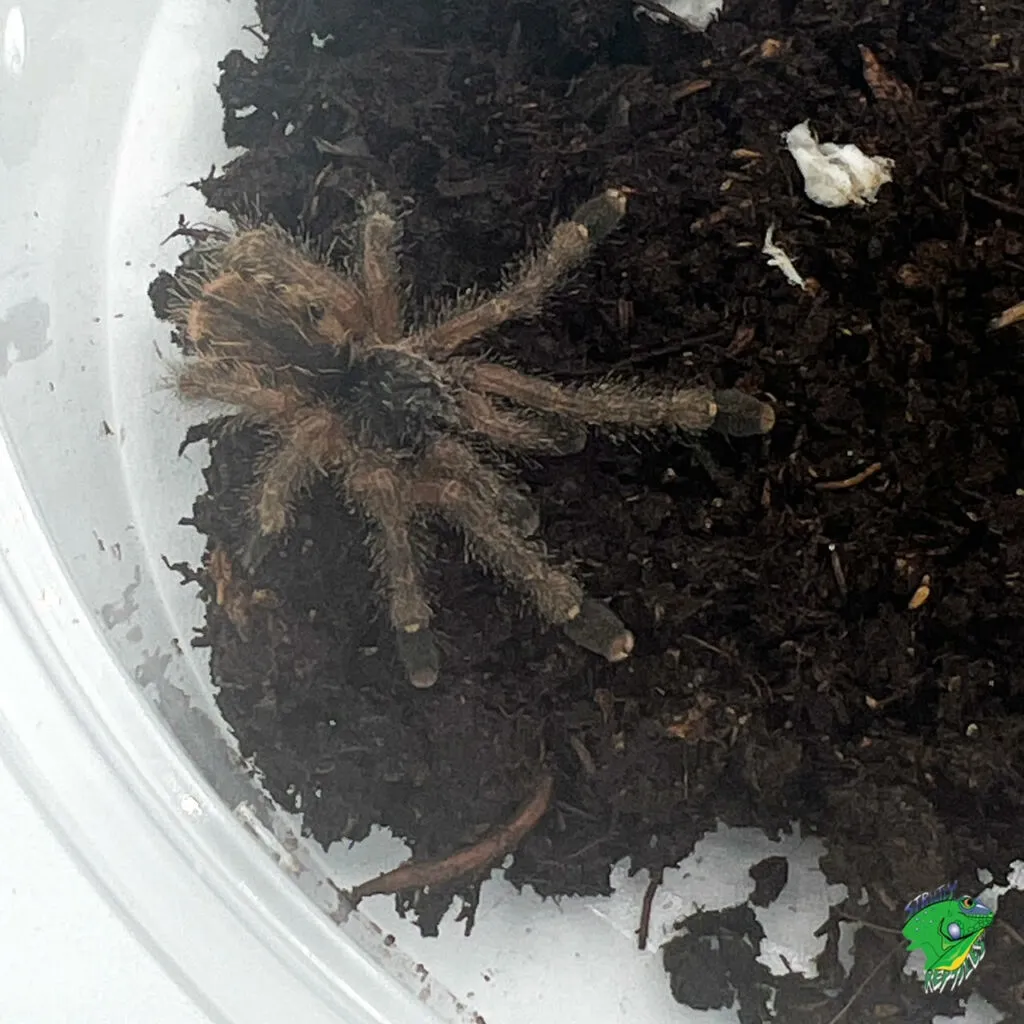
Purple Pink Toe Tarantulas communicate their moods through various behaviors. Recognizing these behaviors is vital for avoiding stress and ensuring safe interaction. Understanding these behavioral cues will allow you to interpret your tarantula’s needs and respond accordingly, promoting a positive relationship built on mutual respect and understanding. This careful observation forms the cornerstone of responsible tarantula ownership.
Defensive Postures and Actions
When feeling threatened, a Purple Pink Toe Tarantula may adopt a defensive posture. This can include rearing up on its hind legs, flaring its fangs, and raising its front legs in a threatening manner. Some individuals may also flick their legs or abdomen. If the perceived threat persists, the tarantula may resort to biting, though this is not a frequent occurrence with this species. Observing these defensive postures is a clear indication to respect the spider’s boundaries and retreat to avoid potential conflict.
Flicking Hairs
Unlike some other tarantula species, Purple Pink Toe Tarantulas do not have urticating hairs on their abdomen. However, some may flick their legs or abdomen as a warning sign. The purpose of this behavior is to signal that the spider is feeling threatened and that you should back off. This is another sign that you should respect the spider’s boundaries. When the tarantula is in distress it may also be more likely to flee its habitat. This is important to take into account before approaching the tarantula. The image of defensive posture illustrates this.
Biting and Venom
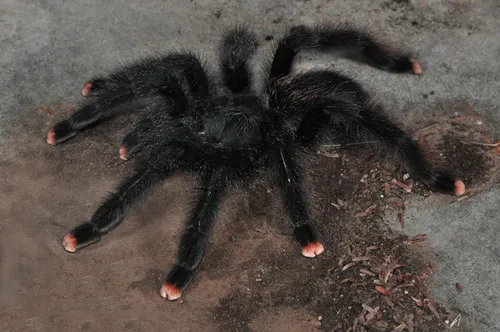
Bites from Purple Pink Toe Tarantulas are rare, but they can occur if the spider feels cornered or threatened. Their venom is considered to be mild and is not generally considered dangerous to humans. The bite itself is often compared to a bee sting in terms of pain. However, individuals with allergies or sensitivities may experience more severe reactions. It’s essential to avoid provoking the tarantula to minimize the risk of being bitten. The venom is mostly used for hunting, but sometimes it can be injected during the bite.
How to Handle Your Tarantula
Handling a Purple Pink Toe Tarantula is best approached with caution and a thorough understanding of its temperament. While they are generally more docile than some other tarantula species, handling should be kept to a minimum and only done when necessary. It’s essential to prioritize the spider’s well-being and avoid any actions that might cause it stress or distress. Proper handling techniques and a safe environment contribute to a more positive and less stressful experience for the tarantula.
Creating a Safe Habitat
A safe and enriching habitat is the foundation of a relaxed tarantula. The enclosure should be appropriately sized, allowing for climbing and exploration. Provide plenty of vertical space, as these are arboreal spiders, and include sturdy branches, cork bark, or other climbing materials. Maintain the correct temperature and humidity levels, and ensure the enclosure is free from drafts or direct sunlight. A secure, well-furnished habitat reduces stress and contributes to a more docile temperament. The image of a well-maintained habitat shows how to best setup an environment.
Gentle Handling Techniques
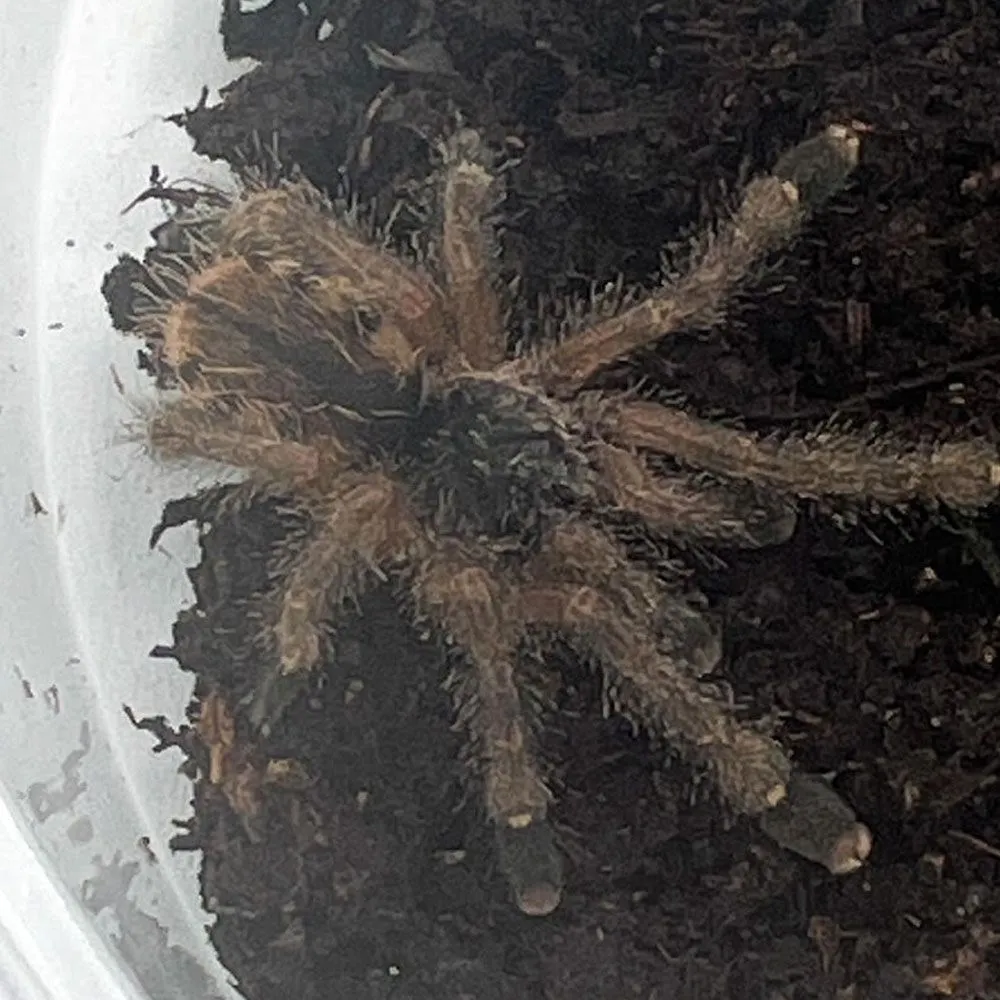
If handling is necessary (e.g., for enclosure maintenance or health checks), approach the tarantula calmly and slowly. Use a soft brush to gently encourage the spider to move onto your hand. Always support the spider’s body, avoiding sudden movements that could startle it. Handle the tarantula close to the ground or a soft surface to minimize the risk of injury if it falls. Avoid touching the tarantula’s fangs or sensitive areas. The image shows how to best handle a tarantula.
Recognizing Stress Signals
Knowing how to recognize stress signals is crucial during handling. If your tarantula adopts a defensive posture, flicks its legs or abdomen, or attempts to flee, immediately cease handling. Return the spider to its enclosure and allow it time to calm down. Respecting the spider’s boundaries and recognizing its stress signals promotes a healthier relationship and reduces the risk of bites or other negative interactions. The image of stress signals illustrates this.
Temperament and Handling
Understanding the individual personality of your Purple Pink Toe Tarantula is key to successful handling. Not all tarantulas will react the same way to handling, and some may never become comfortable with it. Always prioritize the spider’s well-being and avoid handling if it’s not necessary. The image of safe handling showcases the value of a safe approach.
Individual Personality Variations
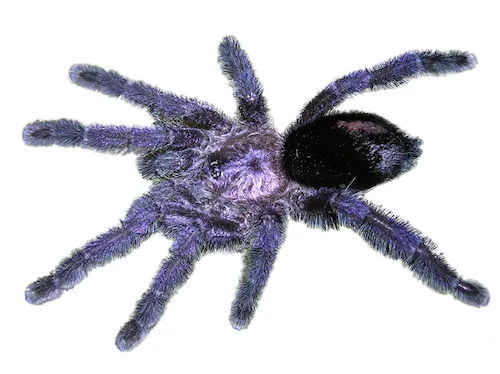
Like humans, individual tarantulas have their own unique personalities. Some are naturally more docile and may tolerate gentle handling, while others are more skittish and prefer to be left alone. Observe your tarantula’s behavior over time to understand its individual preferences and limits. Respecting its personality ensures a more positive experience for both you and the spider. The image of an arboreal tarantula depicts how it tends to behave.
Factors to Avoid
Avoid sudden movements, loud noises, or other stressors when interacting with your Purple Pink Toe Tarantula. Never try to force handling if the spider is not receptive. Avoid touching the spider’s fangs or other sensitive areas. Always wash your hands thoroughly before and after handling to prevent the spread of bacteria or other harmful substances. The image of an arboreal tarantula shows how the spider behaves.
Long-Term Benefits of Understanding Temperament
Taking the time to understand and respect your Purple Pink Toe Tarantula’s temperament fosters a more rewarding pet ownership experience. By prioritizing the spider’s well-being and avoiding unnecessary stress, you can enjoy a long and positive relationship. A well-cared-for tarantula is less likely to exhibit defensive behaviors, making it a more enjoyable and less stressful pet to keep. This knowledge helps in creating a calm and enriching environment for your arachnid companion, which improves their overall health and well-being.
In conclusion, the secrets to understanding the Purple Pink Toe Tarantula’s temperament lie in observation, patience, and respect. By paying attention to their behaviors, providing a suitable habitat, and handling them with care, you can ensure a harmonious relationship with these fascinating creatures. Remember that each tarantula is an individual, and their needs will vary. With a little understanding and care, you can unlock the mysteries of their temperament and enjoy the unique companionship of your Purple Pink Toe Tarantula. They are a wonderful and rewarding species to keep.
